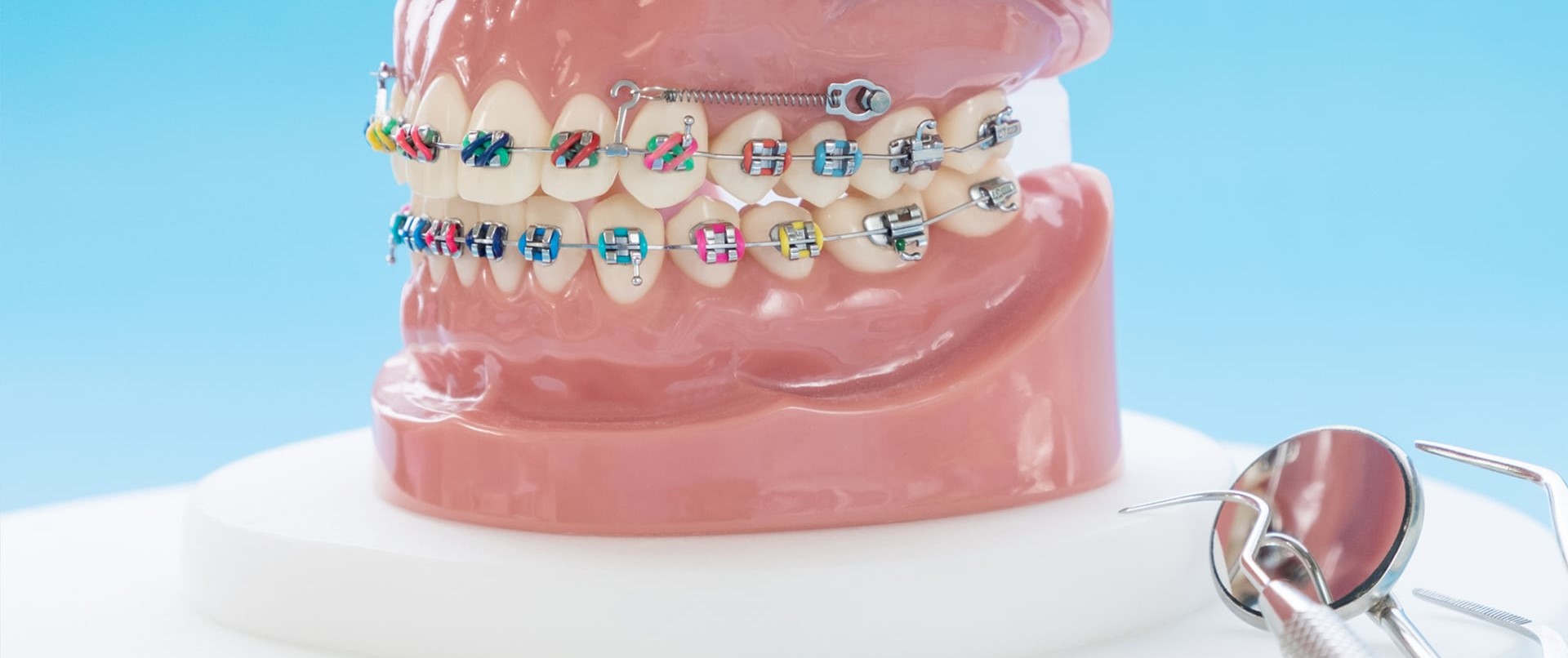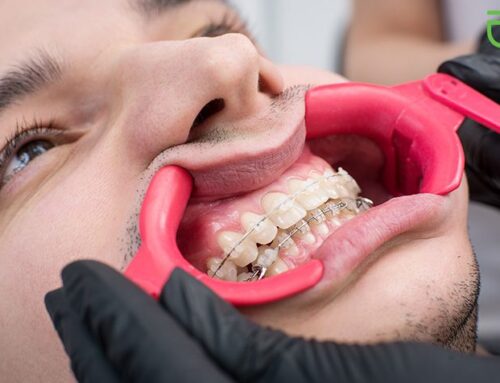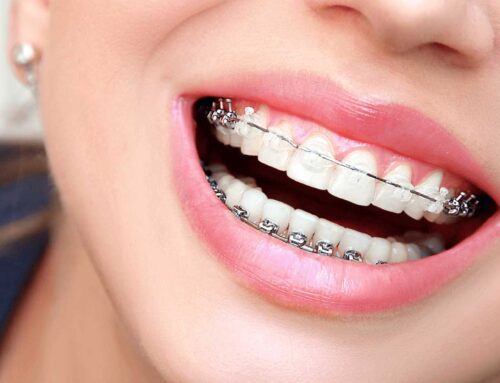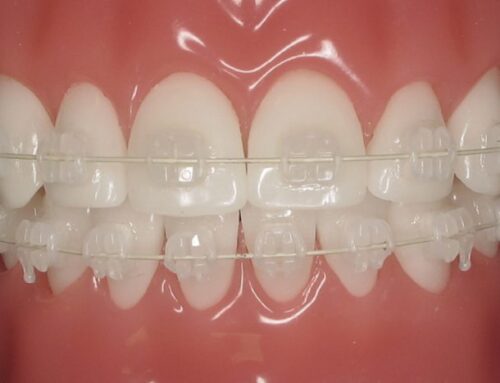Straightening Misaligned Teeth with Temporary Anchorage Devices
Modern orthodontic appliances are able to provide dramatic results for patients with greater speed and comfort than ever before, but there are cases where additional steps are required in order to achieve the desired effect. In cases of severely misaligned teeth or jaw misalignment issues, it is sometimes necessary to use temporary anchorage devices to assist the braces as they work to straighten the teeth and correct the problems.
Getting braces is a very common thing for teens and young adults who want to improve the appearance of their smiles, as well as correct tooth alignment issues that could lead to other dental problems in the future. Thanks to advancements in orthodontic technology and equipment, it’s easier than ever to get amazing results in a short period of time and with minimal discomfort. Modern braces come in a variety of styles and designs, including traditional metal braces, ceramic braces that feature a very subtle appearance, and Invisalign plastic aligners that are nearly invisible to the naked eye.
Depending on the needs of the patient, they may be able to choose whatever style of braces they would prefer to have. However, some patients may find themselves in a situation where certain teeth that are extremely misaligned or in an awkward position in the jaw simply can’t be effectively moved with standard braces. When this happens, orthodontists may turn to the use of temporary anchorage devices to assist in moving teeth into the ideal positions. Why would this be necessary? To answer this, we must first clearly understand how braces work to reposition the teeth in the jaw.
How Do Braces Work to Realign Teeth?
When teeth need to be repositioned in the jaw, there are two things required to achieve movement; pressure and time. Over time, the pressure exerted on the teeth by the braces causes them to gradually shift position in the jaw. In order to create the necessary pressure on the teeth, traditional metal braces and ceramic braces utilize three main components; brackets, arch wires, and ligatures. The brackets are affixed to the outer side of each tooth using a super-strong dental adhesive. The two arch wires (one for the top teeth, one for the bottom teeth) run through each bracket on the teeth, connecting them together. The ligatures, which are small elastic bands, are placed over the arch wires and hooked into the brackets, securing the components together.
The arch wires are shaped specifically to exert a precise pattern of pressure on the teeth, slowly moving them in increments towards the final positions. At regular intervals, usually once per month, the arch wires are replaced with new ones to maintain the required pressure on the teeth and continue the progress towards the final outcome. The entire process typically takes place over a time period of about 12-24 months on average, however some patients may require longer treatments.
With the Invisalign system, no metal brackets, arch wires, or ligatures are used. Instead, the patient is provided with a series of clear plastic tooth aligners that they wear for about two weeks at a time. These clear plastic aligners are custom-shaped for the patient’s mouth, and exert a similar type of pressure to what is created using traditional braces. Invisalign has some significant benefits over metal braces, such as the nearly invisible appearance of the aligners, improved comfort when they are worn, and the ability for the patient to remove and replace the aligners at any time. This is particularly convenient when eating or performing your usual oral care routine, as it makes things easier and more comfortable.
Where things can sometimes get a bit more complex with the orthodontic treatment process is having one or more teeth in the jaw that are so far out of position that traditional braces and Invisalign aligners are simply not able to exert the necessary pressure to properly move them. To correct these issues, pressure must come from an angle or direction that requires another fixed point in the jaw. This is done by using a temporary anchorage device.
What Are Temporary Anchorage Devices?
A temporary anchorage device (TAD) is a small dental implant, visually resembling a metal screw. These small implants are embedded into a predetermined location in the jawbone to provide a solid and secure anchor point to which wires or elastics can be affixed. These wires or elastics are then connected to the misaligned tooth/teeth to exert the necessary pressure to gradually reposition them in the jaw.
In most cases, temporary anchorage devices are used in tandem with braces, moving all the teeth simultaneously and providing results as quickly as possible for the patient. There are some instances where the severely misaligned teeth may need to be moved into a different position first, before the other teeth can have braces attached and continue the treatment to its final outcome.
Once the ideal amount of movement has been acquired, the temporary anchorage device is extracted from the jaw, and the remaining steps of the orthodontic treatment continue to proceed. At the end of the treatment plan, the braces are removed, and the process is considered completed. At this point, most patients will be provided with a removable retainer to be worn regularly to prevent the gradual drift of teeth from their perfectly aligned position and maintain the great look of the patient’s smile.
Can TADs Be Used With Invisalign Invisible Braces?
You may be wondering if TADs can be used in conjunction with Invisalign braces as well. The answer is yes, they can! It is possible for orthodontists to formulate a treatment plan that combines the use of temporary anchorage devices with Invisalign clear aligners. These types of combination treatments are unique to each individual patient, therefore to get more specific details on what this might look like, you’d need to arrange for a personalized consultation with your orthodontist. They will be able to provide all the details you need and answer all of your questions.
What To Expect When Undergoing Orthodontic Treatment with TADs
When it has been determined that your orthodontic treatment will require the use of a TAD, it’s helpful to know what to expect before the process begins. Having a temporary anchorage device situated in your jaw is a very simple procedure. To begin, you will likely undergo a thorough physical examination and have new up-to-date x-rays obtained. This information will be used to identify the optimum location for the temporary anchorage device to be inserted.
During your appointment to have the TAD embedded into your jaw, you will be given a local anaesthetic and freezing to numb the area. In some cases, patients may be offered additional sedation based on their needs, such as nitrous oxide, to provide greater comfort and alleviate anxiety. After the TAD has been implanted, there may be some lingering soreness in the area, however this can easily be managed using over-the-counter pain and anti-inflammatory medication. The residual soreness should dissipate within a few days, at which point you will likely barely even notice that the TAD is present in your mouth.
Caring for a TAD is very straightforward. As part of your regular oral care routine, you’ll want to frequently use an antibacterial oral rinse to help keep your mouth cleaner and fresher. Dip your toothbrush into a small amount of oral rinse, and gently brush around the area of the temporary anchorage device. You may also want to This will help to loosen any small bits of food and bacteria that may have accumulated around it. Rinsing the mouth will wash away the loosened material and keep the area around the TAD clean and healthy.
After treatment is completed and the TAD has been removed from your jaw, you may notice a little lingering soreness afterwards. This is normal and will go away in a day or so. Before you know it, the area where the temporary anchorage device was embedded will have completely healed over and you’ll never even know it was there.
Moving Forward with Orthodontics to Get Straighter Teeth & a Beautiful Smile
If you’ve been considering orthodontics to help get your smile in style, but aren’t sure about what would be needed to correct an extremely misaligned tooth, the best thing to do is to arrange for a no-obligation consultation today. The team of dental professionals here at Georgian Dental will gladly review all your available options for orthodontics and clearly explain whether or not you may need a temporary anchorage device to achieve your perfect smile. Whether you are interested in the Invisalign system, or simply curious about what type of braces might be best for you, it’s our job to make sure you have all the information before you make a decision. Get in touch with us today and let’s get the process started!
Appointment Request
If you’re interested in any of our procedures, and would like to meet with one of our dentists to discuss options, costs and get additional information, complete this short form and we’ll give you a call to arrange for a no-obligation appointment at our Barrie clinic.










